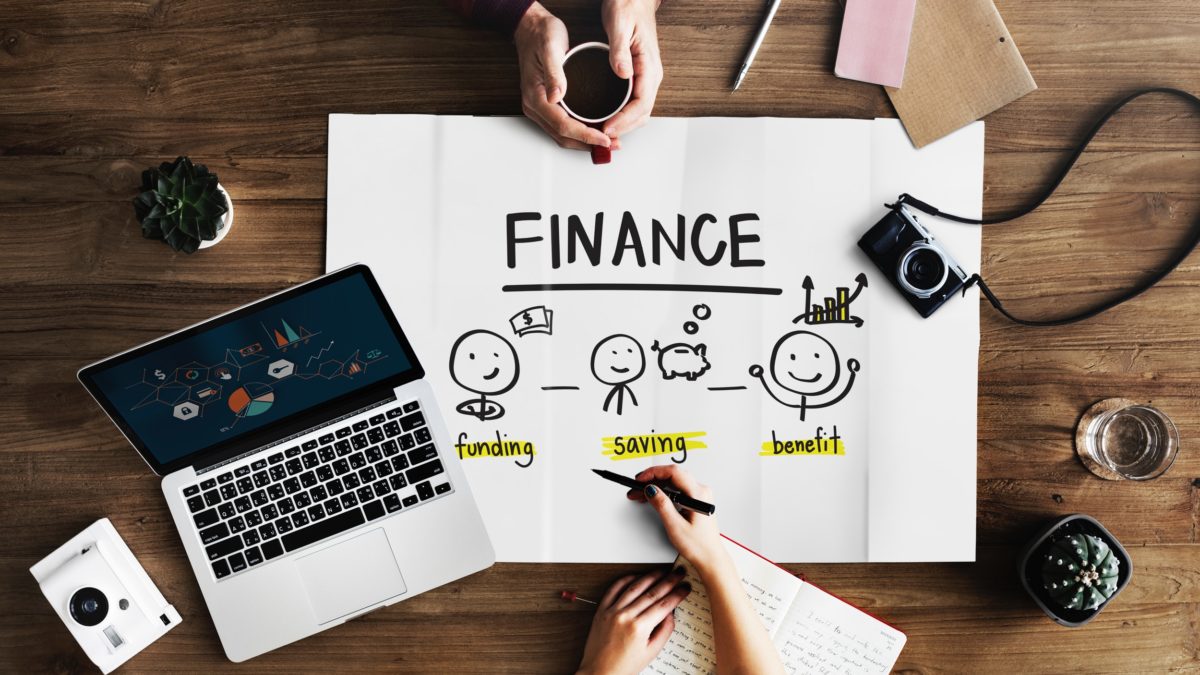How To Save Money
Successful Savings
Saving money often ranks right up there with flossing and eating kale: you know that you should do it, that it can be a small action that really pays off later, but it’s just not much fun. It can also be hard to prioritize when there are more pressing needs, like paying rent and filling up your gas tank, on your financial to-do list. But the Imagine America Foundation is here to share some tips to make it easier—and some information to remind you how important it is. In the newest edition of our financial literacy series, we’ve compiled important information to help you learn about savings: how to get started, reaching your goals, and how to manage it. Let’s dig in!
Where to Put Your Money
In the freezer or under your mattress are less-than-ideal places to put your extra funds. But one of the first questions you should answer for yourself is: once you’ve got a little money saved up, where should you put it? You’ve got a lot of options, but many of them will depend on how much money you have and what your goals are. Some of the most common choices are a basic savings account, a certificate of deposit, or a retirement account.
Savings account
A basic savings account is going to function very similarly to a checking account: they typically have a low required minimum to open, minimal or no fees, and few additional requirements to maintain. This is usually a great option any time you’re starting to save, whether you’re wanting to create an emergency fund or save up for a new couch. Savings accounts aren’t meant to function like a checking account, however, when it comes to withdrawals: most have a limit on the number of withdrawals you can make each month (or quarter) before you start incurring fees.
Savings accounts are generally insured by the FDIC (Federal Deposit Insurance Corporation), meaning your money is protected or guaranteed should your bank close or go out of business. They typically have a modest interest rate. So while you’ll earn a little something back on your money, you might want to explore other options if you have a larger sum of money or plan to save it for a longer term (such as for retirement, rather than a down payment on your next car).
Certificate of deposit
A certificate of deposit (or CD) can get you higher interest rates than a savings account (sometimes only marginally higher, depending on the terms). These savings certificates have a fixed maturity date, meaning that you can’t touch your money in the meantime. Let’s say you have $1,000 in savings: in a regular savings account, you can access that money any time you need it (subject to withdrawal limitations at your institution) and you earn 1 percent interest as long as it’s in there. If you put that same $1,000 in a 5-year CD, you can’t withdraw any of that money for five years, but you earn 3 percent interest instead.
CDs are not what you want for an emergency fund or other shorter-term savings, but it can be a better option when you want a slightly longer-term benefit. Always read all the terms and conditions carefully: it can be tedious and confusing to read the fine print, but it’s worth the time and trouble upfront to go through it and to ask questions before you decide.
Retirement account
And when you’re looking at long-term savings, it’s never too early to start saving for retirement. This is money that you can’t touch until you’re of retirement age, usually 59 ½, unless you’re willing to face very steep penalties and fees. But by starting now, you can leverage the benefits of compound interest when building that wealth.
That is, the interest that is accumulated on your investment over time begins to earn interest itself: let’s say you have invested $1,000 and have a rate of return of 5%. At the end of a year, assuming you haven’t made additional investments or incurred any fees and that your interest compounds monthly, your account is now $1,051.16. Now you’re earning interest on $1,051.16, instead of just $1,000. Over time, that adds up quickly! You can ask your investment advisor for help calculating the interest rate and costs, and there are also many resources online for figuring it out on your own.
There are cautions to note, of course: unlike a savings account or CD, investment accounts are not FDIC-insured. This means that in addition to losing value on your earnings, you can also lose your principal investment.
Filling It Up
After you get an account set up (or know what type of account you want to open when the money is available) you can start funding it. One of the best places to start is an emergency fund: having $1,000 or even $500 set aside in case you have an unexpected car repair or a doctor’s visit can help keep you on track without putting you in a panic. The trick is to get in the mindset of not touching that money unless it’s an actual emergency: it’s not there for a regular oil change or to pay for the massage you consider a health-and-wellness expense.
Automate your savings however you can. If you earn a paycheck that is automatically deposited, see if your employer will let you set up two deposits: one with a small amount (whatever you can afford, though 10 percent is a good rule of thumb to strive for) into your savings account, and the rest into your checking account. If that’s not an option, make a habit of moving some money from any income you receive into that savings account as soon as possible. The less time you spend looking at it in your spending account, the more likely you are to forget it was there in the first place.
By now it’s a cliché to suggest giving up your daily designer coffee as a means to saving, but those small changes can make all the difference. Think about your spending carefully, stick to a budget, and keep your goals at the front of your mind. There’s also a host of great apps out there that can help you: Qapital, Acorns, and Digit are all savings and investment apps that help you take small amounts of money and putting it to better use (like rounding up your $1.67 purchase at the convenience store to $2.00 and putting the $0.33 in your savings account).
Savings and the Big Picture
There is a standard rule of thumb that you should put 20 percent of your monthly income in savings. That can feel like an impossible goal, especially when you’re starting your first career or embarking on a new path. But it’s most important to start with whatever you can and try to inch your way up as you go. Many retirement accounts with automated deposits, for instance, allow you to automatically increase your contributions by 1 percent every year. Look for opportunities to find spending you won’t miss and put that money toward your long-term goals, whether that’s building up your emergency fund or planning for your retirement. It can be easy to think of putting away some savings as a problem for the future but doing a little extra homework and a little extra legwork in the beginning can help make reaching financial stability so much easier later.
Always talk with a financial advisor or investment specialist before making big decisions about your money and how it’s being used to meet your short- and long-term goals. In the meantime, start saving what you can now!
Follow our blog for other helpful tips and information about maintaining your financial health. And don’t forget to look for the next edition of Career College Central: we’ll wrap up our financial literacy series with information about identity theft!
Becoming Financially Capable Series- Budgeting: Three Buckets of Money
In today’s inflationary environment, budgeting and saving money can seem like a daunting task. Whether it is creating an emergency fund, saving for retirement, or budgeting for vacation, it can feel like it is impossible to check all of these boxes. However, we believe there…
Becoming Financially Capable Series: 8 Things You Should Start Doing Now to Help Grow Your Wealth
The Becoming Financially Capable Series is brought to you by Chairvolotti Financial and 401Karat. Whether it is budgeting for inflationary pressures or planning for significant life events such as switching jobs or buying a home, personal finances are at the top of most people’s minds…
Establishing an Emergency Fund with 401karat
ESTABLISHING AN EMERGENCY FUND WITH 401KARAT: SEASON 3, EPISODE 6 MORE FROM OUR EPISODE ON ESTABLISHING AN EMERGENCY FUND WITH 401KARAT Where Is 401karat Located? CONTACT 401KARAT Visit Their Website Location 631 South Orlando Ave.Suite 103Winter Park, FL 32789 Contact 401KARAT Phone: 833-527-2848 Email: info@401karat.com…
Leave a Reply Cancel reply
- - ADVERTISEMENT - -
Categories
- Alumni Series (13)
- Automotive (57)
- Aviation (15)
- Business (14)
- Business & Arts (18)
- Career College Expositions (7)
- Career Development (96)
- CCC Blog (1)
- CCC Podcast (9)
- College Resource (90)
- College Showcase – Lincoln Tech (6)
- College Showcase – New Jersey (8)
- College Showcase – Pennco Tech (1)
- College Showcase – Universal Technical Institute (2)
- Continuing Education (154)
- Cosmetology (3)
- Counselor Resources (108)
- Criminal Justice (3)
- Dental Assistant (2)
- Education (109)
- Financial Literacy (17)
- Health Sciences (50)
- Heritage Series (3)
- High School Recruitment Series (4)
- Housing Series (10)
- HVAC (8)
- Imagine America Scholarships (12)
- Information Technology (17)
- Massage Therapy (5)
- Mechanical Sciences (109)
- Medical Assistant (12)
- Millennial Student Series (4)
- News (11)
- Nursing (22)
- Online education (13)
- Pandemic Proof Series (4)
- Personal Finance (17)
- Podcast (90)
- Research (11)
- Road Map Series (2)
- Scholarships (12)
- Social Media Series (4)
- Strata Tech (3)
- Student Success (29)
- Study Tips (3)
- Time Managment (1)
- Top 10 (10)
- Trucking (2)
- Uncategorized (14)
- Universal Technical Institute (19)
- Veteran Affairs (8)
- Welding (24)
- Women in Skilled Trades (3)
Tags
- - ADVERTISEMENT - -






